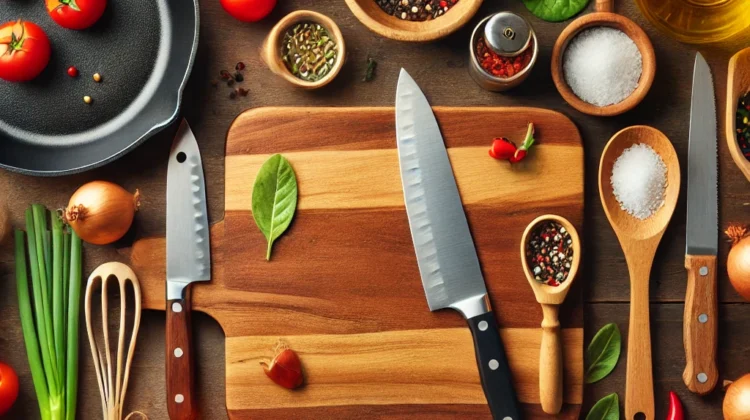
Cooking at home isn’t just about following recipes—it’s about developing good habits that make your meals taste better, your time in the kitchen more efficient, and your overall experience more enjoyable. Whether you’re a beginner or an experienced cook, adopting these 10 cooking habits will elevate your skills and help you create consistently great food.
1. Master Mise en Place (Everything in Its Place)
One of the most effective habits professional chefs swear by is mise en place, a French term that means “everything in its place.” This involves prepping all ingredients—chopping vegetables, measuring out spices, and gathering all necessary tools—before you start cooking. Not only does this prevent scrambling for ingredients mid-recipe, but it also ensures a smoother, more efficient cooking process.
2. Keep Your Knives Sharp
A dull knife is not only frustrating to use but also dangerous. Regularly sharpening your knives makes prep work easier, faster, and safer. Invest in a quality sharpening tool or take your knives to a professional for maintenance. Also, learn proper knife techniques to improve precision and efficiency.
3. Season As You Go
One of the biggest differences between restaurant-quality food and home cooking is seasoning. Adding salt and spices throughout the cooking process (instead of just at the end) allows flavors to build and develop. Taste your food as you cook and adjust seasoning accordingly.
4. Learn to Balance Flavors
Great cooking is about achieving the right balance of flavors—sweet, salty, sour, bitter, and umami. If a dish tastes flat, consider adding an acid (like lemon juice or vinegar) or a pinch of salt. Understanding how these elements interact will help you troubleshoot dishes and enhance flavors without relying on a recipe.
5. Use the Right Pan for the Job
Not all pans are created equal. Knowing when to use stainless steel, cast iron, nonstick, or enameled cookware can greatly impact the outcome of your dish. For example, cast iron is excellent for high-heat searing, while nonstick is ideal for delicate foods like eggs and pancakes.
6. Control Your Heat
Cooking at the right temperature is key to achieving the perfect texture and flavor. High heat is great for searing meats, while low heat is better for simmering sauces or slow-cooking tough cuts. Understanding when to adjust the heat prevents burning and ensures even cooking.
7. Don’t Overcrowd the Pan
If you crowd a pan with too many ingredients, they’ll steam instead of sear. Whether you’re browning meat or roasting vegetables, giving food enough space allows for proper caramelization, which enhances flavor and texture. If necessary, cook in batches to achieve the best results.
8. Let Meat Rest Before Cutting
Cutting into meat immediately after cooking causes juices to escape, leading to dryness. Letting meat rest for a few minutes allows the juices to redistribute, keeping it moist and flavorful. A general rule is to rest meat for about 5 minutes for smaller cuts and up to 20 minutes for larger roasts.
9. Learn Basic Sauces
A great sauce can transform even the simplest meal. Mastering a few basic sauces—like a pan sauce, béchamel, or vinaigrette—gives you the ability to enhance dishes with minimal effort. Learning how to deglaze a pan and build flavors will instantly upgrade your cooking.
10. Clean As You Go
A messy kitchen makes cooking more stressful. By cleaning as you cook—washing dishes while food is simmering, wiping down counters, and putting away ingredients—you’ll keep your workspace organized and avoid a huge pile of dishes at the end.
Final Thoughts
Cooking isn’t just about technique—it’s about habits that make the process smoother and more enjoyable. By implementing these 10 cooking habits, you’ll not only improve your skills but also gain more confidence in the kitchen. With time, these small changes will make a significant difference in the quality of your home-cooked meals.
